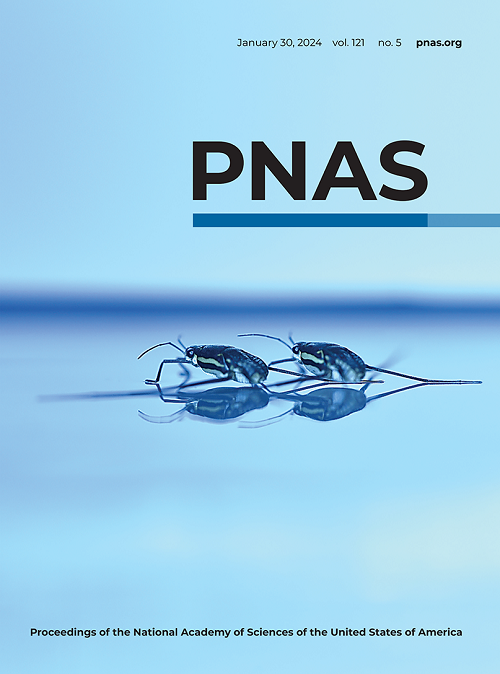The pathogenic factor of ZC4H2-associated rare disorder is a postsynaptic regulator for synaptic activity and cognitive function.
IF 9.4
1区 综合性期刊
Q1 MULTIDISCIPLINARY SCIENCES
Proceedings of the National Academy of Sciences of the United States of America
Pub Date : 2025-07-09
DOI:10.1073/pnas.2426375122
引用次数: 0
Abstract
The maintenance of excitatory synaptic activity is crucial for cognitive function and genetic mutations are responsible for the pathogenesis of related brain disorders. However, the roles of these pathogenic factors in synaptic dysregulation and cognitive malfunction are still poorly understood. In this study, a conditional knockout mouse model lacking ZC4H2-an X-linked gene implicated in ZC4H2-associated rare disorder (ZARD) -in forebrain excitatory neurons is generated and these mice exhibit cognitive malfunction, recapitulating the intellectual disability manifestation of ZARD. Mechanistically, ZC4H2 harbors a protein interaction network with key excitatory synaptic regulators and ZC4H2 interacts directly with AMPA receptors (AMPARs) and regulates their ubiquitination at the postsynaptic sites, thereby maintaining AMPARs protein stability and synaptic expression. ZC4H2 deficiency specifically and aberrantly increases AMPAR-mediated excitatory synaptic transmission and impairs synaptic plasticity of long-term potentiation. More importantly, pharmacological treatment with perampanel, an AMPAR-specific antagonist, successfully restores the excitatory synaptic activity and cognitive function of ZC4H2-deficient mice. Together, we establish that ZC4H2 is a postsynaptic regulator for AMPARs and excitatory synaptic activity and highlight that the dysregulation of these biological processes is a crucial etiology underlying ZARD-associated intellectual disability.zc4h2相关罕见疾病的致病因子是突触活动和认知功能的突触后调节因子。
兴奋性突触活动的维持对认知功能至关重要,基因突变是相关脑疾病的发病机制。然而,这些致病因素在突触失调和认知功能障碍中的作用仍然知之甚少。本研究构建了一种前脑兴奋性神经元缺乏zc4h2(一种与zc4h2相关罕见疾病(ZARD)有关的x连锁基因)的条件敲除小鼠模型,这些小鼠表现出认知功能障碍,再现了ZARD的智力残疾表现。从机制上说,ZC4H2与关键的兴奋性突触调节因子具有蛋白质相互作用网络,ZC4H2直接与AMPA受体(AMPARs)相互作用,并在突触后位点调节其泛素化,从而维持AMPARs蛋白的稳定性和突触表达。ZC4H2缺乏特异性和异常地增加ampar介导的兴奋性突触传递,损害突触的长时程增强可塑性。更重要的是,使用ampar特异性拮抗剂perampanel进行药物治疗,成功地恢复了zc4h2缺陷小鼠的兴奋性突触活动和认知功能。总之,我们确定ZC4H2是AMPARs和兴奋性突触活动的突触后调节剂,并强调这些生物过程的失调是zard相关智力残疾的关键病因。
本文章由计算机程序翻译,如有差异,请以英文原文为准。
求助全文
约1分钟内获得全文
求助全文
来源期刊
CiteScore
19.00
自引率
0.90%
发文量
3575
审稿时长
2.5 months
期刊介绍:
The Proceedings of the National Academy of Sciences (PNAS), a peer-reviewed journal of the National Academy of Sciences (NAS), serves as an authoritative source for high-impact, original research across the biological, physical, and social sciences. With a global scope, the journal welcomes submissions from researchers worldwide, making it an inclusive platform for advancing scientific knowledge.

 求助内容:
求助内容: 应助结果提醒方式:
应助结果提醒方式:


